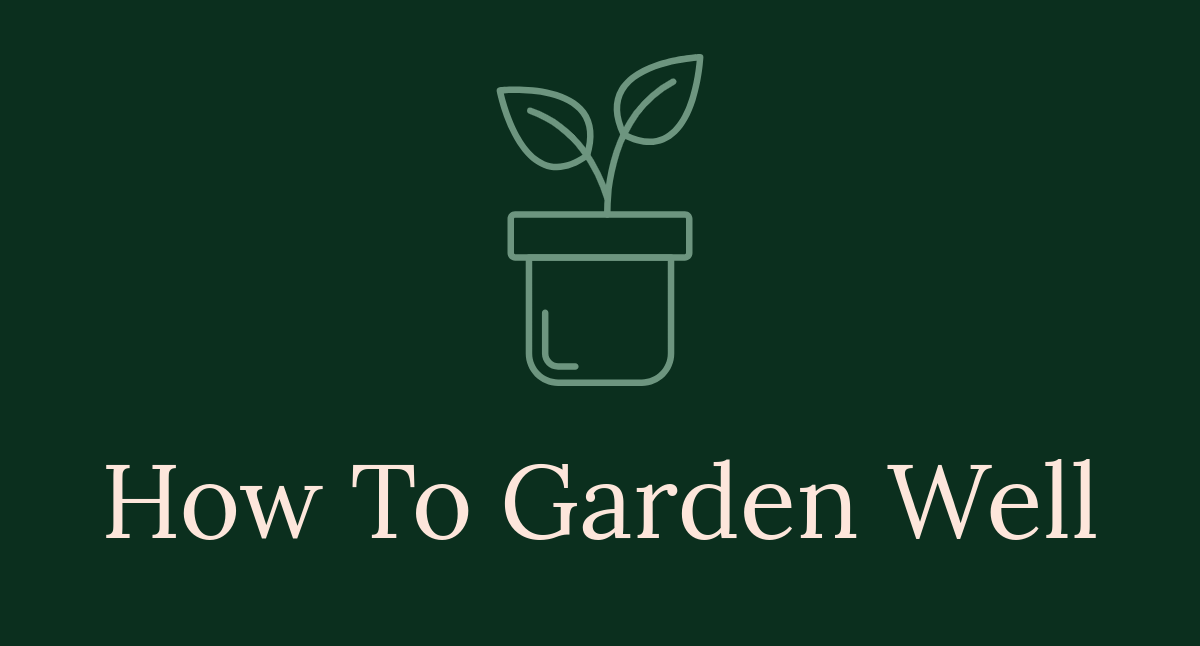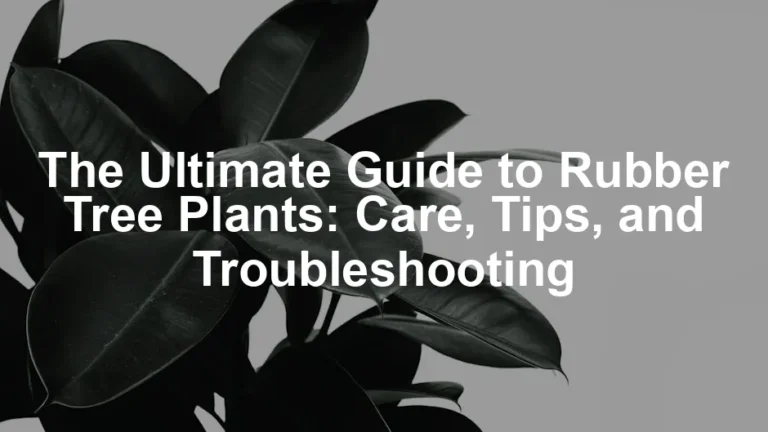
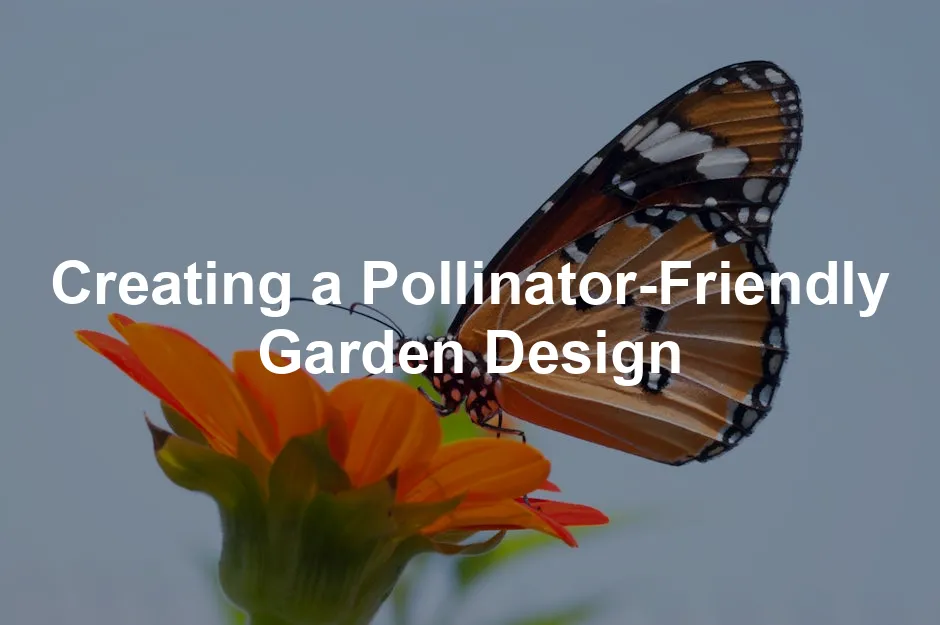
Creating a Pollinator-Friendly Garden Design
Introduction
Creating a pollinator-friendly garden is like throwing a party for nature’s hardest workers. These gardens play a crucial role in supporting biodiversity and local ecosystems. Without pollinators, our food supply would take a nosedive. Imagine a world without tasty tomatoes or juicy berries!
Pollinator gardens attract a variety of beneficial insects, including bees, butterflies, and hummingbirds. These tiny helpers are essential for pollinating many of the plants we rely on. Imagine your garden buzzing with life and color, full of fluttering wings and busy bees—sounds magical, right?
This article aims to provide you with a comprehensive guide on designing a pollinator-friendly garden. You’ll learn how to create a sanctuary that not only beautifies your space but also supports the vital pollinators that keep our ecosystems thriving. So, grab your gardening gloves and let’s get started!
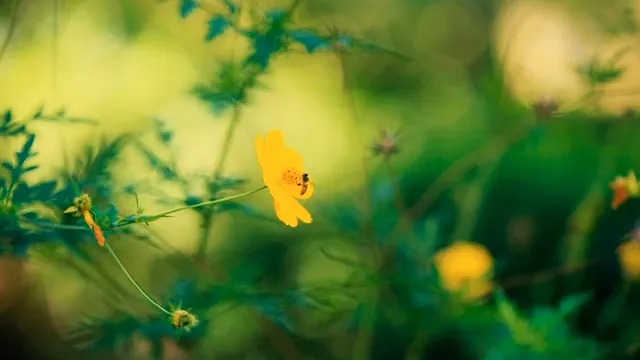
What is a Pollinator Garden?
Definition and Importance
A pollinator garden is a carefully curated habitat designed to support the lifecycle of pollinators all year round. Think of it as a buffet for bees and butterflies, where they can munch on a variety of tasty nectar-filled flowers. These gardens are vital for sustaining pollinator populations, which face numerous threats, including habitat loss and pesticide exposure.
Native plants are the stars of any pollinator garden. They provide food, shelter, and nesting sites for local species, forming the backbone of a healthy ecosystem. Pollinators have evolved alongside these plants, forming a relationship that is as old as dirt—literally! Native plants are not just pretty faces; they are crucial for maintaining the delicate balance of nature.
Incorporating native species ensures that your garden supports local wildlife while requiring less maintenance. Plus, they’re adapted to thrive in your local climate. So, planting a pollinator garden is like giving Mother Nature a high-five while enjoying the beauty of flowers in your yard!

Types of Pollinators
Pollinators come in a variety of shapes and sizes. Think bees buzzing around, butterflies elegantly flitting about, and hummingbirds hovering like tiny helicopters. Each plays a vital role in our gardens and ecosystems.
Did you know there are over 20,000 known bee species worldwide? That’s a lot of buzzing buddies! Most of these bees are solitary, preferring to work alone rather than in hives. Butterflies, on the other hand, are like the fashionistas of the garden, with their vibrant colors and delicate wings. And let’s not forget about hummingbirds! These tiny powerhouses flap their wings about 70 times per second. Talk about a workout!
These pollinators are essential for the health of our gardens. They help plants reproduce by transferring pollen, ensuring we enjoy fruits, vegetables, and beautiful blooms. With such an array of pollinators, a garden can be a lively spectacle of nature—an absolute joy to behold!
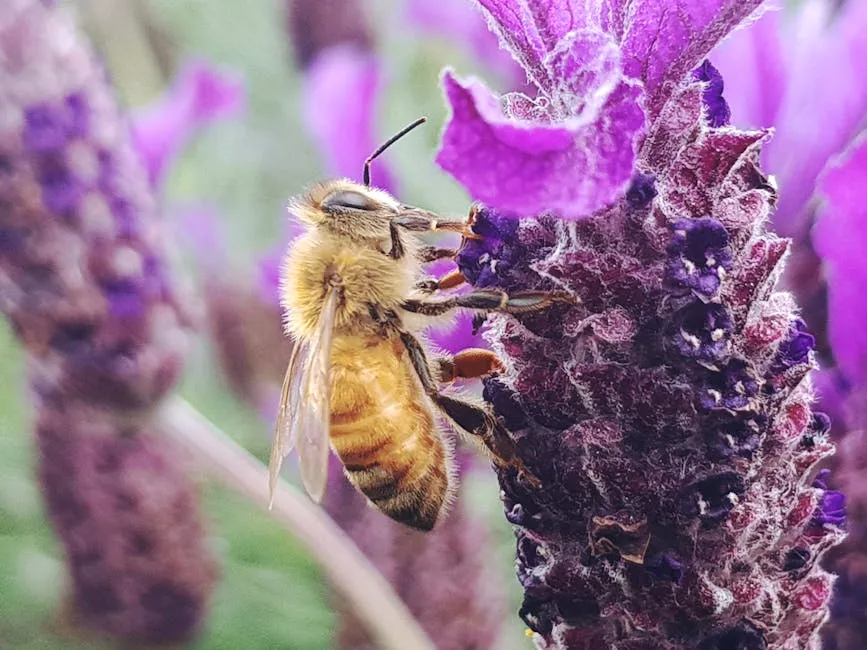
Benefits of a Pollinator-Friendly Garden
Creating a pollinator-friendly garden is like gifting the planet a vibrant, eco-conscious present. First off, these gardens boost biodiversity. When you fill your space with diverse plants, you create habitats for various pollinators. This variety leads to healthier ecosystems, promoting balance and resilience in nature.
Pollinator gardens also enhance local food production. Fruits and vegetables rely on these tiny helpers for successful pollination. Imagine biting into a juicy tomato or plucking ripe strawberries, all thanks to the hard work of bees and butterflies. You’re not just planting flowers; you’re sowing the seeds for a flourishing food supply!
Aesthetically, pollinator gardens are a feast for the eyes. With colorful flowers dancing in the breeze, they’re like nature’s own art gallery. You can mix and match heights and colors, creating a captivating visual display. Think of a garden filled with cheerful coneflowers, regal asters, and sweet-smelling lavender. It’s a vibrant paradise that attracts not only pollinators but also your family and friends.
In essence, a pollinator-friendly garden brings ecological, nutritional, and visual benefits. You’re not just gardening; you’re contributing to a healthier planet while enjoying a beautiful oasis right at home. What’s not to love?

Designing Your Pollinator Garden
Choosing the Right Plants
Selecting the right plants is the cornerstone of a successful pollinator garden. Native plants should make up 70 to 80% of your selections. Why? Because they create the best habitat for local pollinators. Native species have evolved alongside our buzzing buddies, ensuring that they provide the food and shelter these creatures need.
You might wonder which plants are the best bet for attracting pollinators. Here’s a list of top contenders:
- Coneflowers (Echinacea): These vibrant blooms are like candy for bees. They’re easy to grow and bring a pop of color to your garden. You can get Echinacea seeds to start your garden!
- Milkweed (Asclepias): Essential for Monarch butterflies, milkweed serves as a host plant for their larvae. Plus, its flowers are a favorite for many pollinators. Consider getting some Milkweed seeds to support these beautiful creatures!
- Asters (Symphyotrichum): Blooming late in the season, asters keep the pollinator party going well into fall. You can find Aster seeds to keep your garden blooming!
- Bee Balm (Monarda): With its bold colors and fragrant blooms, bee balm attracts a range of bees and butterflies. Grab some Bee Balm seeds to attract these lovely pollinators!
- Black-Eyed Susans (Rudbeckia): These cheerful, golden flowers are not just eye-catching; they also lure in various pollinators. You can plant some Black-Eyed Susan seeds for a splash of color!
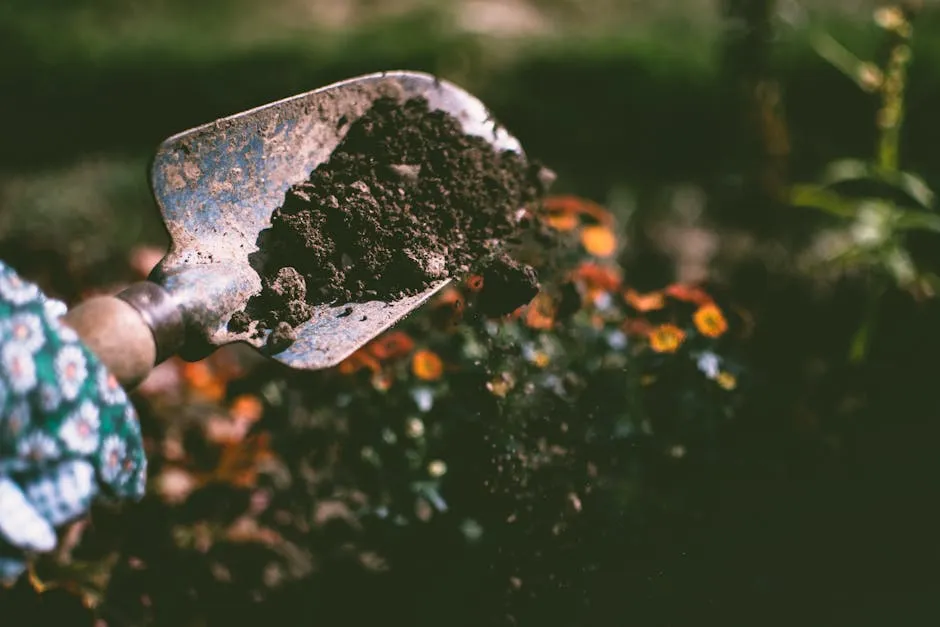
When planning your garden, consider bloom times. You want flowers available throughout the growing season. Early bloomers like serviceberry usher in spring, while late bloomers such as asters keep the nectar flowing into fall. A well-timed mix ensures that your garden is a consistent buffet for all types of pollinators.
Creating Plant Layouts
Now that you have your plants lined up, it’s time to consider how to arrange them. Various garden styles work beautifully for pollinators. A cottage garden, for instance, features a mix of wildflowers, creating a lush, inviting atmosphere. You can also try layered designs, where taller plants stand at the back and shorter ones grace the front. This approach not only looks good but also provides different heights for various pollinators to access.
Plant density matters too. Clustering plants in groups of 3-7 helps pollinators find food more efficiently. Imagine a bee buzzing around, only to discover a single flower 10 feet away. It’s like searching for a needle in a haystack! Instead, plant clusters make it easy for our furry friends to fill their pollen baskets.
Layering adds visual appeal and creates habitats for different pollinators. Tall plants like sunflowers draw in larger pollinators, while smaller blooms invite tiny bee species. Mixing shapes and colors can transform your garden into a flower-filled wonderland, enticing a diverse range of visitors. Also, don’t forget to equip yourself with a gardening tool set to make planting a breeze!
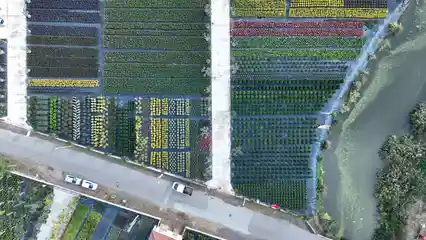
As you plan your layout, think about the overall experience. Create pathways that invite exploration and curiosity. Include sitting areas where you can enjoy the sights and sounds of nature’s best workers at play. Each element contributes to a thriving, engaging pollinator habitat, turning your garden into a lively ecosystem that’s not just functional but a feast for the senses.
By combining these thoughtful plant selections and layouts, you’ll create a beautiful, pollinator-friendly garden that will thrive through every season. Now, let’s get planting and make magic happen for our buzzing buddies!
Incorporating Additional Features
To create a welcoming environment for pollinators, don’t forget about adding essential features like water sources and nesting habitats. Pollinators, like bees and butterflies, need hydration just as much as they need flowers. A shallow birdbath can do wonders! Fill it with fresh water and add some pebbles for perching. This way, your little friends can sip safely without taking an unplanned dip.
Nesting habitats are just as crucial. Consider installing bee hotels, which provide cozy spots for solitary bees to lay their eggs. You can also create brush piles or leave some twigs and logs scattered around. These natural shelters offer protection from predators and harsh weather. Plus, they add a rustic charm to your garden!
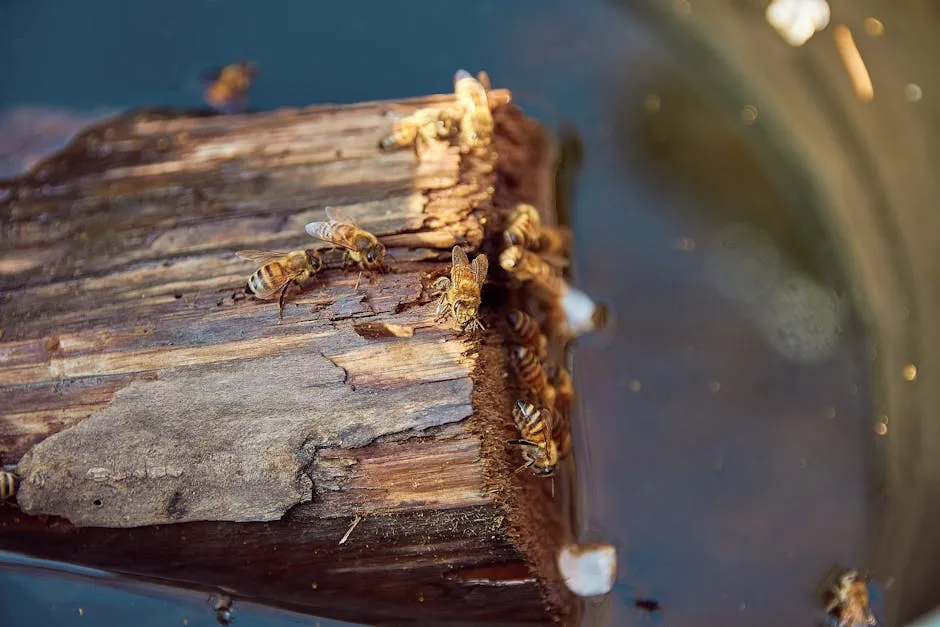
Another aspect to keep in mind is creating sunny microclimates. Pollinators love basking in the sun, so ensure your garden has plenty of bright spots. Position flowering plants to catch the morning light. This encourages pollinators to visit early in the day when they’re most active.
On the flip side, protection from prevailing winds is vital. Wind can be a buzzkill for our buzzing buddies. Use taller plants or fences to create windbreaks and shield your garden from harsh gusts. By combining these elements, you’ll create a haven that’s not only beautiful but also functional for our essential pollinators.
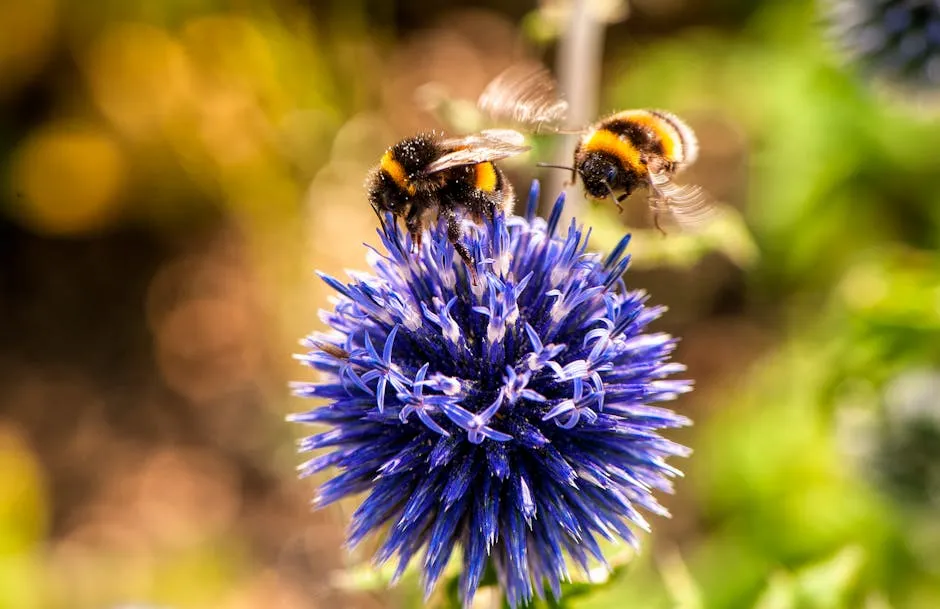
Maintenance Practices for a Thriving Pollinator Garden
Sustainable Gardening Techniques
Maintaining a pollinator-friendly garden requires some thoughtful practices. First and foremost, ditch those harmful pesticides and herbicides! These chemicals can wreak havoc on delicate pollinator populations. Instead, opt for organic pest control methods. You can use natural solutions like organic neem oil or insecticidal soap to keep pesky bugs at bay without harming the friendly ones.
Another essential practice is to foster a healthy ecosystem. Plant diversity is key. The more variety you have, the better your garden can withstand pests and diseases. Encourage beneficial insects, like ladybugs and lacewings, to take up residence. They’ll gladly help keep those harmful pests in check.
Don’t forget about leaving some areas wild! Allowing parts of your garden to grow a bit unruly creates excellent overwintering habitats. This is especially important for bees. Ground-nesting bees need bare soil to burrow, while others might seek shelter in dead plant material. A little chaos can go a long way in supporting pollinator populations.
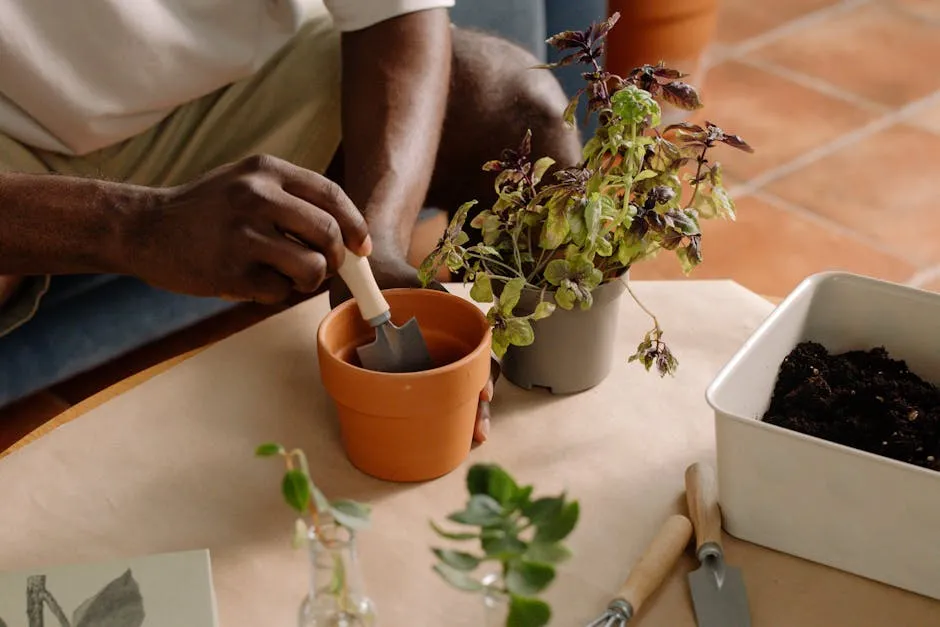
Lastly, be mindful of seasonal cleanup. While it’s tempting to tidy up every fall, resist the urge to cut back all your plants. Leaving dried stems and leaves provides crucial shelter for overwintering insects. So, embrace the messy look for a season! By following these sustainable gardening techniques, you’ll ensure your pollinator garden remains a thriving haven for all its buzzing inhabitants.
Creative Pollinator Garden Ideas
Lively Layers
Creating a vibrant pollinator garden is like hosting a colorful fiesta for nature! To achieve this, select a dazzling array of flowers in both warm and cool hues. Think fiery oranges alongside cool blues. This mix will attract various pollinators and keep your garden looking fresh all season.
Layering is key. Position taller plants at the back and shorter ones at the front. This adds depth and visual interest. Consider plants like sunflowers, which reach for the sky, paired with cheerful daisies or low-growing ground covers. This combination not only looks stunning, but it also provides different levels for various pollinators to explore. Don’t forget to add a plant support stakes to help your taller plants stand tall!

Don’t forget about seasonal interest! Choose plants that bloom at different times. Early bloomers like crocuses will kick off the party, while late bloomers such as asters keep the festivities going into fall. By planning for year-round color, your garden will always have something to offer.
Curated Color
For those who prefer a polished look, a curated color palette is the way to go! Stick to two or three favorite colors for a cohesive design. This approach adds sophistication while still being inviting to pollinators.
Begin by anchoring your garden with a stunning flowering tree or shrub. Consider choices like a crabapple or cherry, which provide not only beauty but also essential nectar in spring. Next, create distinct planting areas with well-organized beds. This structure keeps everything neat and tidy, appealing to both pollinators and the eye.
As you design, include a cozy seating area to enjoy the view. Use simple materials to maintain a clean aesthetic. Finally, pay attention to transitions between hardscapes and garden beds. Low-growing plants can soften these edges, ensuring a smooth flow throughout your garden.

Personalize your garden by incorporating elements that reflect your style. Whether it’s a quirky garden sculpture or a favorite color scheme, adding your touch will make it uniquely yours. Let your personality shine through while creating an inviting space for pollinators!
Conclusion
Pollinator-friendly gardens are essential for supporting biodiversity and local ecosystems. They create safe havens for bees, butterflies, and other beneficial insects, ensuring they thrive in our neighborhoods. By planting a variety of native flowers and providing essential resources, we contribute to the health of our environment.
Starting your own pollinator garden is as easy as planting a few flowers. Even the smallest spaces can make a difference. Every flower counts! So, roll up your sleeves and dig in—you’re not just gardening; you’re helping to heal the planet. Don’t forget to record your gardening journey in a gardening journal!

For those eager to learn more, numerous resources are available. Local gardening clubs and online forums can connect you with like-minded enthusiasts. Consider visiting community gardens or workshops to gain hands-on experience. Together, we can cultivate a greener, buzzing future!
FAQs
What plants are best for attracting pollinators?
Choose native plants such as Coneflowers, Milkweed, Asters, Bee Balm, and Black-Eyed Susans. These flowers are favorites among pollinators.
How can I maintain my pollinator garden?
Regularly water your plants, remove weeds, and leave some areas wild for nesting. Embrace organic pest control to keep pollinators safe.
Is it necessary to avoid all pesticides?
Yes! Harmful chemicals can negatively impact pollinators. Opt for organic alternatives like neem oil or insecticidal soap.
How much space do I need for a pollinator garden?
Even small spaces can be effective! Container gardens work great, allowing you to create a pollinator paradise on patios or balconies.
Can I create a pollinator garden in a city?
Absolutely! Urban gardening is thriving. Use window boxes or community plots to incorporate pollinator-friendly plants into your city life.
Please let us know what you think about our content by leaving a comment down below!
Thank you for reading till here 🙂
All images from Pexels
